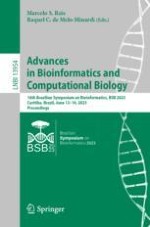2023 | OriginalPaper | Buchkapitel
Gene Networks Inference by Reinforcement Learning
verfasst von : Rodrigo Cesar Bonini, David Correa Martins-Jr
Erschienen in: Advances in Bioinformatics and Computational Biology
Verlag: Springer Nature Switzerland
Aktivieren Sie unsere intelligente Suche, um passende Fachinhalte oder Patente zu finden.
Wählen Sie Textabschnitte aus um mit Künstlicher Intelligenz passenden Patente zu finden. powered by
Markieren Sie Textabschnitte, um KI-gestützt weitere passende Inhalte zu finden. powered by
